Trigger Warning: The story has details of deaths, including those of minors; reader’s discretion advised.
“National media showed what they had to. Our endeavour is to give you our version of the truth, as those who suffered and survived. Even if 5% of the ground reality reaches the people with every small, local news outlet’s report, eventually, when these narratives add up, at least some truth will trickle down to the people of this country who live in faraway cities and clamour for war.” These were Jamrodh Singh’s words to Alt News days after his uncle, Amrik Singh (54), was killed in Pakistani shelling in Kashmir’s Poonch.
Over a month has passed since India and Pakistan announced a ceasefire (May 10), but civilians residing near border areas are still grappling with the magnitude of their losses. Amrik Singh was among the 21 Indian civilians killed in the conflict between India and Pakistan that went on for four days. On the intervening night of May 6 and 7, shortly after India launched a military strike targeting terror bases in Pakistan, the neighbouring country retaliated with cross-border firing, hitting many civilian areas. The Indian strikes, labelled Operation Sindoor, followed the April 22 Pahalgam massacre in which 26 civilians were shot dead by terrorists with alleged links to Pakistan.
Caught unaware when the strikes happened, families of those who lost their loved ones recount how blindsided and helpless they felt. Their stories were not covered by several mainstream television channels in India that were too busy celebrating the operation’s success as a befitting revenge for Pahalgam. Even in Prime Minister Narendra Modi’s address to the nation after the conflict, there was no mention of the civilian casualties, which included five children.
Alt News spoke to five bereaved families who debunked some of the falsehoods spread by media outlets and shed light on the on-ground realities of such operations, forcing us to look beyond headlines that only celebrate the military wins in the conflict.
Deaths Marred by Misinformation
On May 9, while the conflict was at its peak, a family living in Khai Pheme Ki village in Punjab’s Ferozpur had no idea their lives were about to change forever. A drone fired by the Pakistan army hit a car stationed in their garage at around 8:40 pm. Within minutes, the whole house, about 10 kilometres away from the International Border, was engulfed in flames. Sukhwinder Kaur, a woman in her late forties, who was in the kitchen at the time this happened, suffered third-degree burns. Three days later, on May 12, she succumbed to her injuries. Kaur’s husband and son, who were also present inside the house when the drone fell, also suffered serious injuries and are still recovering.
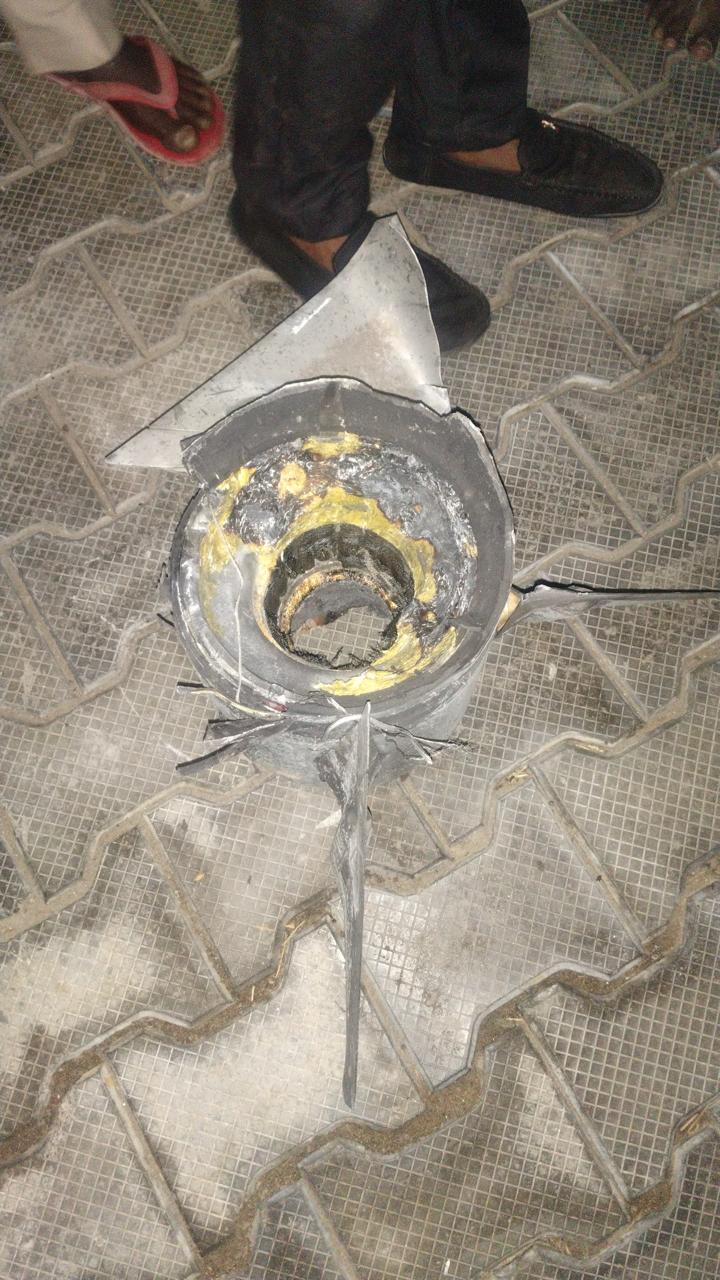
But adding to the pain of her grieving family were misreports around her death that seemed to blame the family for what happened.
“Shells were being fired, and media claimed that they were sitting with their lights on; that’s why it [the drone] hit their home. Isn’t that stupid? They are sitting elsewhere.. How do they know whether or not their lights were on at the time?” Kaur’s relative Ramandeep Singh told Alt News, the rage in his voice palpable.
“Some reported their home lights were on, some said their car lights were on [after the blackout was announced], some locals even spread the word that they were making spurious liquor, and the drone struck that cylinder, and that is how their house caught fire. They are an Amartayi parivaar [a colloquial expression to describe a family of Amritdhari Sikhs—those committed to the Khalsa code of conduct which prohibits consumption of tobacco, alcohol, or meat]. These are rumours,” he said. “Ask those who have suffered the loss, you’ll get goosebumps,” Singh added.
In fact, relatives of the family even clarified to some media outlets that the lights of their home were not on and that the drone hit the house in spite of that. Even then, the channels that broadcast this have not corrected their reports.
Kaur was among the first civilian casualties in the conflict outside of Jammu and Kashmir after Pakistan retaliated against Operation Sindoor.
Two days before Kaur’s home was struck by mortar shells, a family in Kashmir’s Poonch was similarly seething in anger.
Mohammed Iqbal was among those killed in retaliatory shelling by Pakistan in the early hours of May 7. However, the 47-year-old Qari, an honorific title given to those who specialise in recitation of Quranic verses, was labelled a terrorist by many news outlets.
“My uncle, Qari Mohammed Iqbal, was martyred in shelling by Pakistan, and news channels ran bulletins that India killed a Lashkar terrorist, the Pulwama mastermind, who was hiding in Kotli. He was a well-respected teacher and religious figure in our community. They showed an image of him in his last moments, bleeding… celebrating it as a triumph. Media is supposed be the fourth pillar of democracy, and they ran such horrific fake news regarding a martyr who is a well-respected man and a kattar Hindustani (a staunch Indian). We were already heartbroken, what they were broadcasting was like rubbing salt in our wounds,” Tariq Manzoor told Alt News from Poonch. “We really hope those channels pay the price for the hurt they have caused us. I hope these channels are shut down, actually…”
Read: His name was Qari Mohammad Iqbal. He was not a terrorist.
Manzoor also told us that Mohammed Iqbal, who taught at the local school, Zia-Ul-Uloom, for over 20 years, was trying to shift the children who showed up in school to a safer spot on a lower floor when a splinter pierced through the classroom wall and hit him. He added that it was unfortunate that a man who died doing something noble was plastered across channels as a ‘most-wanted terrorist’.
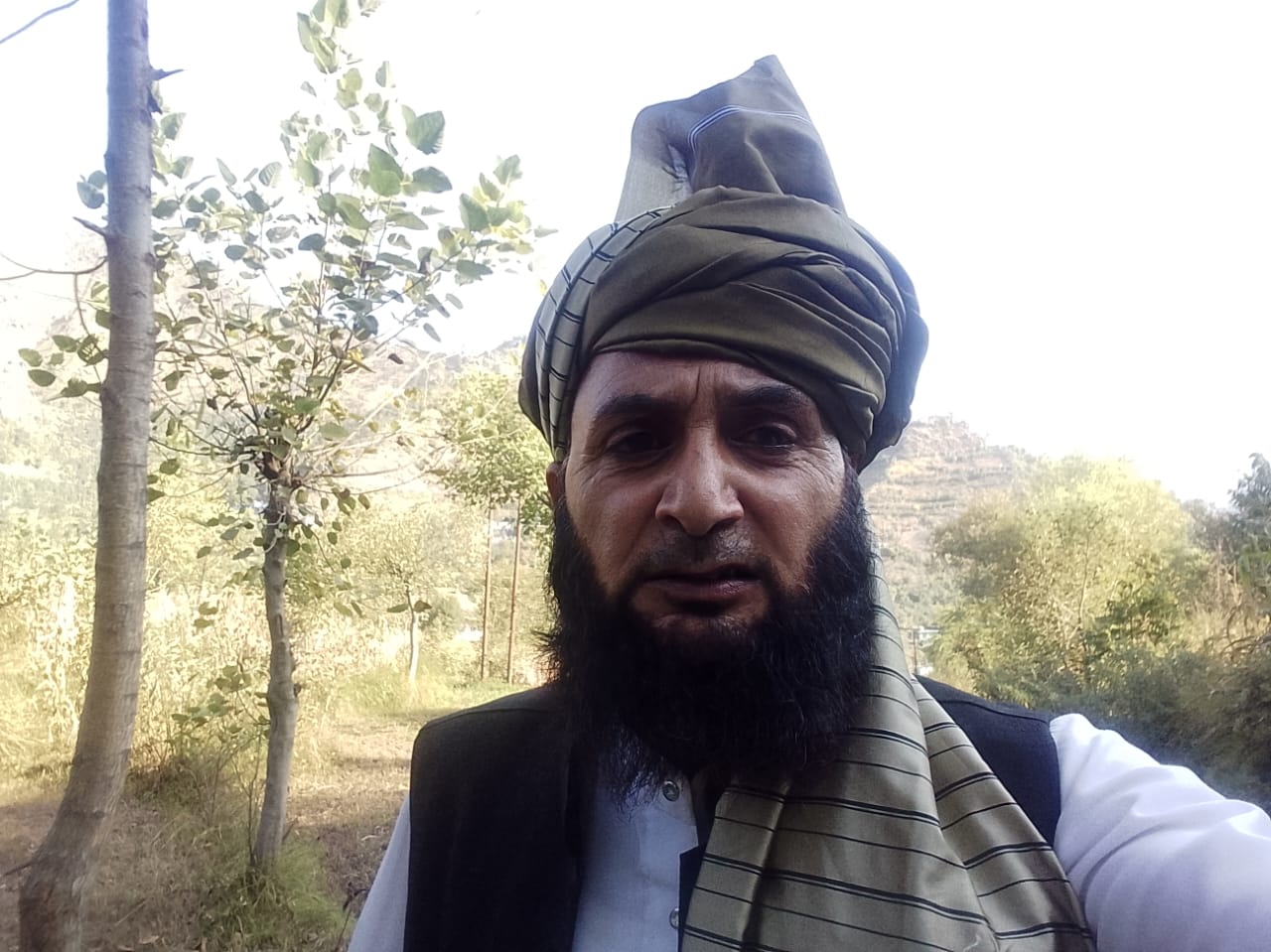
Close to where Qari Mohammed Iqbal breathed his last was a Gurudwara. When the conflict escalated, media outlets ran suggestive shows that Pakistan was targeting Sikhs’ place of worship in Poonch.
On May 7, at least two segments by the news channel Republic claimed that Pakistan killed three innocent civilians by striking the Gurudwara in Poonch. “Cowardly Pakistan is now targeting civilians and Gurudwaras… India is in complete solidarity with the families of the Gur-Sikhs and the Ragis who lost their lives… Pakistan will have to be punished,” said the show’s host.
On May 8, senior journalist and Aaj Tak’s managing editor, Anjana Om Kashyap’s segment “Halla Bol” also reiterated the same. Note that in her programmes between May 7 and May 10, Kashyap did not pose any questions to the administration regarding evacuation efforts and whether civilians could have been saved by timely intervention. Also, it’s worth noting that during the Pahalgam massacre, Kashyap dubbed the incident “Kashmir Files Part 2”.
“Look, Pakistan is exposing itself. If it attacks Amritsar, if it attacks a Gurudwara in Poonch and three people are killed, then we can understand their intentions and where they are headed,” she remarked in her show on May 8.
But these assertions stand on shaky ground. Two local journalists Alt News spoke to dismissed claims that these attacks ‘targeted’ a Gurudwara. Late Amrik Singh’s nephew, Jamrodh Singh, also countered the claim shared by news outlets. Jamrodh Singh told us that his uncle worked closely with the Gurudwara and recited verses from the holy text there.
“Yes, a shell did fall on the Gurudwara, but a shell also fell on a mosque. It hit so many homes. It’s wrong to say that communities were targeted. How is it possible? They can’t fire shells based on which community they want to target… Sardars died, Muslims died, Hindus died, children died, people everywhere died,” he said. Explaining that he comes from an army background, Jamrodh Singh said that artillery guns narrow down on the location and target, wherever the firing is coming from. This time, India likely used some advanced weaponry that was similar to a moving gun; this made it hard for Pakistan to determine the exact location, and so they fired mercilessly and hit whatever they could, he added.
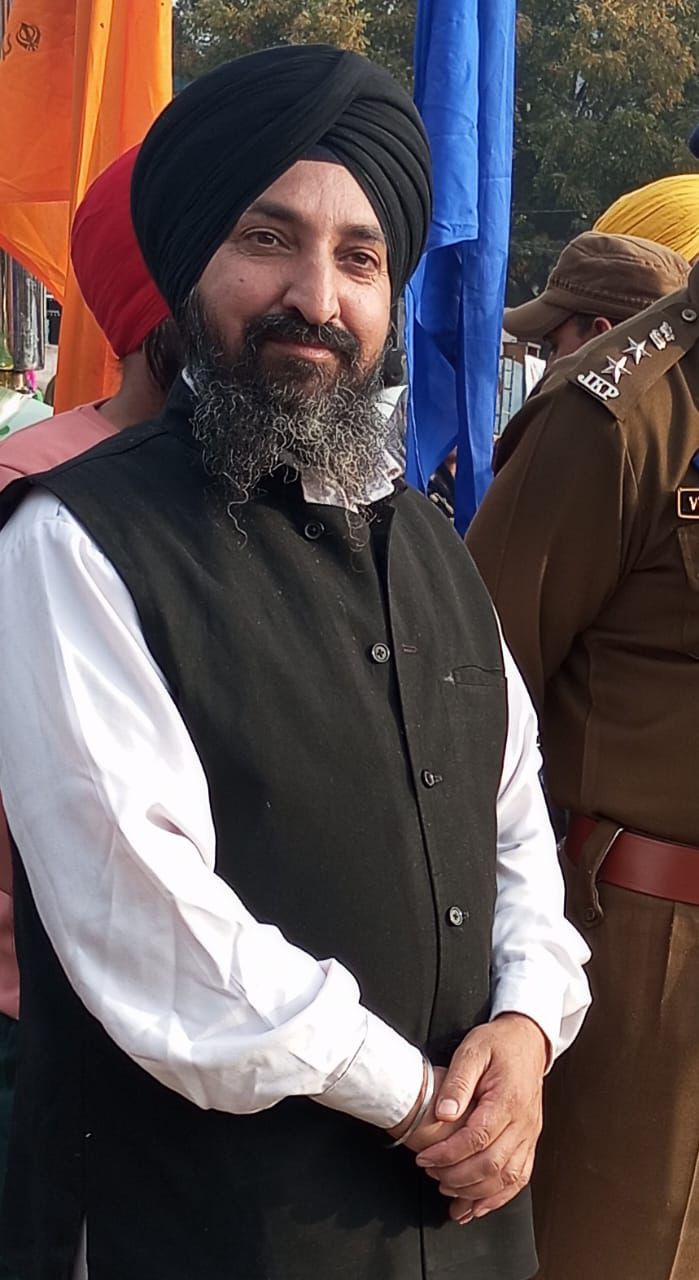
Recounting his uncle’s last moments, he said that Amrik Singh went to the Gurudwara early on the morning of May 7, where he made an announcement, asking everyone to stay indoors because he had an inkling that the situation could worsen. Amrik Singh then tried to move his own family to safety in a bunker on the ground floor of his house. The street-facing side of the ground floor had a shop front. The bunker doubled up as storage.
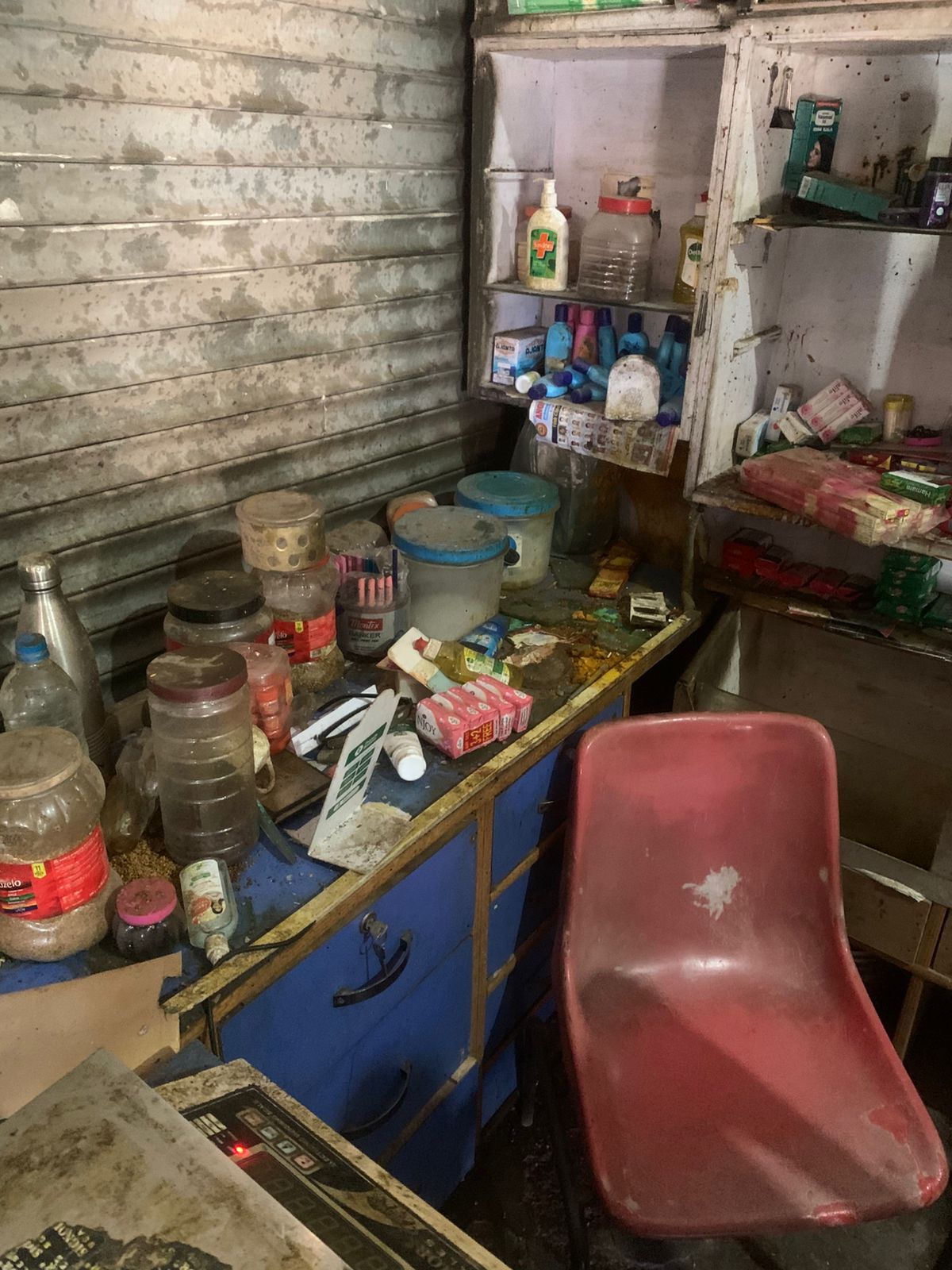
“He must have come to the shop to get a broom when a shell perforated through the shuttered shop and hit him,” he said, adding, “Can you imagine? The shutters were made of strong metal, it pierced through that… it was hard to believe… my uncle’s body just lay there, slumped on a chair.” Amrik Singh passed away around 7:30 am on May 7.
Jamrodh Singh shared with us more visuals that display the extent of the damage caused to the shop/bunker due to shelling by Pakistan.
Amrik Singh’s elder brother, Harjeet Singh, was also seriously injured in the shelling on May 7. His shop too suffered sizeable damage due to the strikes.
Jamrodh Singh and the rest of Amrik Singh’s family, like the other victims’ kin Alt News spoke with, are deeply upset with the administration. They all told Alt News that had they received some notice regarding what was about to unfold, perhaps some lives could have been saved.
But these questions were seldom raised by TV journalists of mainstream media channels. Worse, they blatantly misreported on the ground situation. On May 7, for instance, when Pakistan was retaliating with broad-range attacks, ABP’s Chitra Tripathi hosted a segment in which other anchors and the channel’s correspondents joined in to offer updates. At the 1:57-minute mark of the segment, Tripathi says that schools were closed in Poonch and Jammu because of Pakistan’s continued provocation. “We must ensure the safety of our citizens and children,” she said.
However, each of the four families from Poonch we spoke to, separately told Alt News that until the morning of May 7, schools had issued no notice of closure. Manzoor said that people in Poonch had no clue that India was going to strike and there would be retaliatory fire, so children came to the school where his uncle taught as usual that morning. Jamrodh Singh also said that many children were on their way to school early in the morning when firing intensified.
Families of three children who were killed in shelling told Alt News that the schools were preparing for a mock drill on May 7.
Among the children who breathed their last that day were 12-year-old twins Zain and Urwa. Their aunt, Maria Khan, told us that the family was planning to visit the kids’ maternal grandparents on May 6, but chose to stay in Poonch because of the mock drills that were supposed to be held in school and by the military in their area. Zain and Urwa’s parents, originally residents of Chandak, had moved to Poonch just two months ago to be closer to the school both children attended.
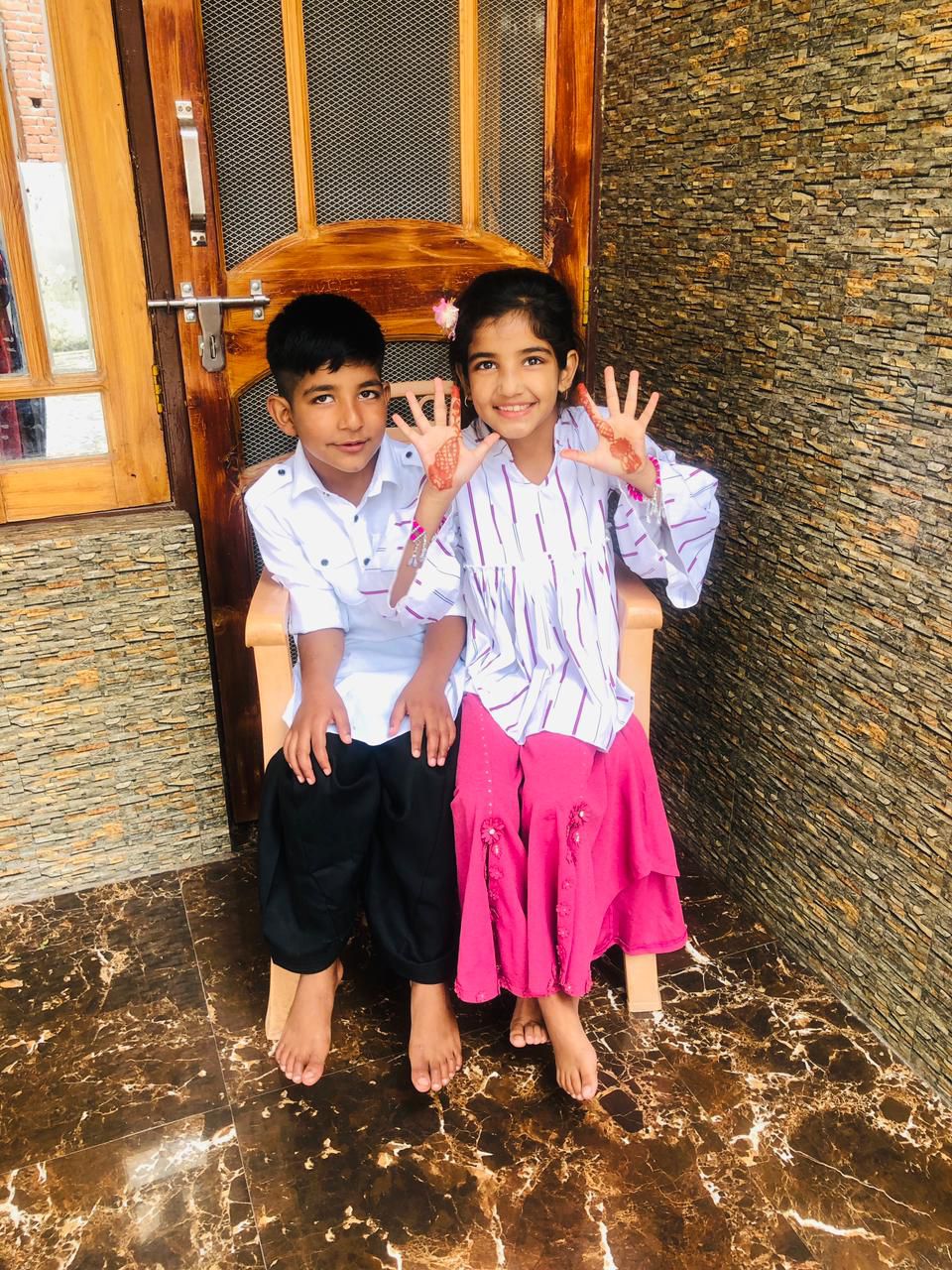
“They [Zain and Urwa’s parents] thought the kids would learn what to do in such situations in school, and they would also know how to approach such a scenario. If not for the drill, they would have left the previous day for their maternal grandparents’ home,” she told Alt News, her voice choking. “They had said it [the drill] would take place on May 7… If instead of saying a mock drill would happen, they had said that a war-like situation might take place, then may be our family wouldn’t be in this state. May be the kids would still be with us, and none of this would have happened.”
A video report by Mojo Story on the twins’ death claimed that they had “stepped out for school but never returned”. However, Maria told us that the twins died while trying to evacuate from their homes on the morning of May 7.
Shelling started around 1:30-2 am at night and seemed to intensify, which is when the twins’ mother reached out to her family, and they decided that the twins’ maternal uncle would come pick them up after 5:30 am. “The street on which they lived is congested, so he [the maternal uncle] could not get the car in. They just stepped out of the home to walk towards the car when a shell fell behind them and exploded. The splinters of the shell hit them from the back… Zoya (Urwa’s nickname), who was holding her mother’s hand, bled out and died on the spot. Zain also died right there; he had a cut the size of a palm, his intestines had fallen out of his body,” she said, adding that the father, who was also severely injured, did not know about the kids’ deaths for days.
Alt News also reached out to the family of 14-year-old Vihaan Bhargav, who attended the same school as Zain and Urwa. Vihaan was killed on May 7 at around 11:30 am after splinters from a shell fired by Pakistan struck him in the head. His father, Sanjeev Kumar, a government employee in the education department, confirmed that on May 6, authorities had announced there would be a mock drill the following day; however, he said, they launched Operation Sindoor. “It’s a fact that no mock drill was conducted. Maybe these lives could have been saved if a mock drill had happened”.
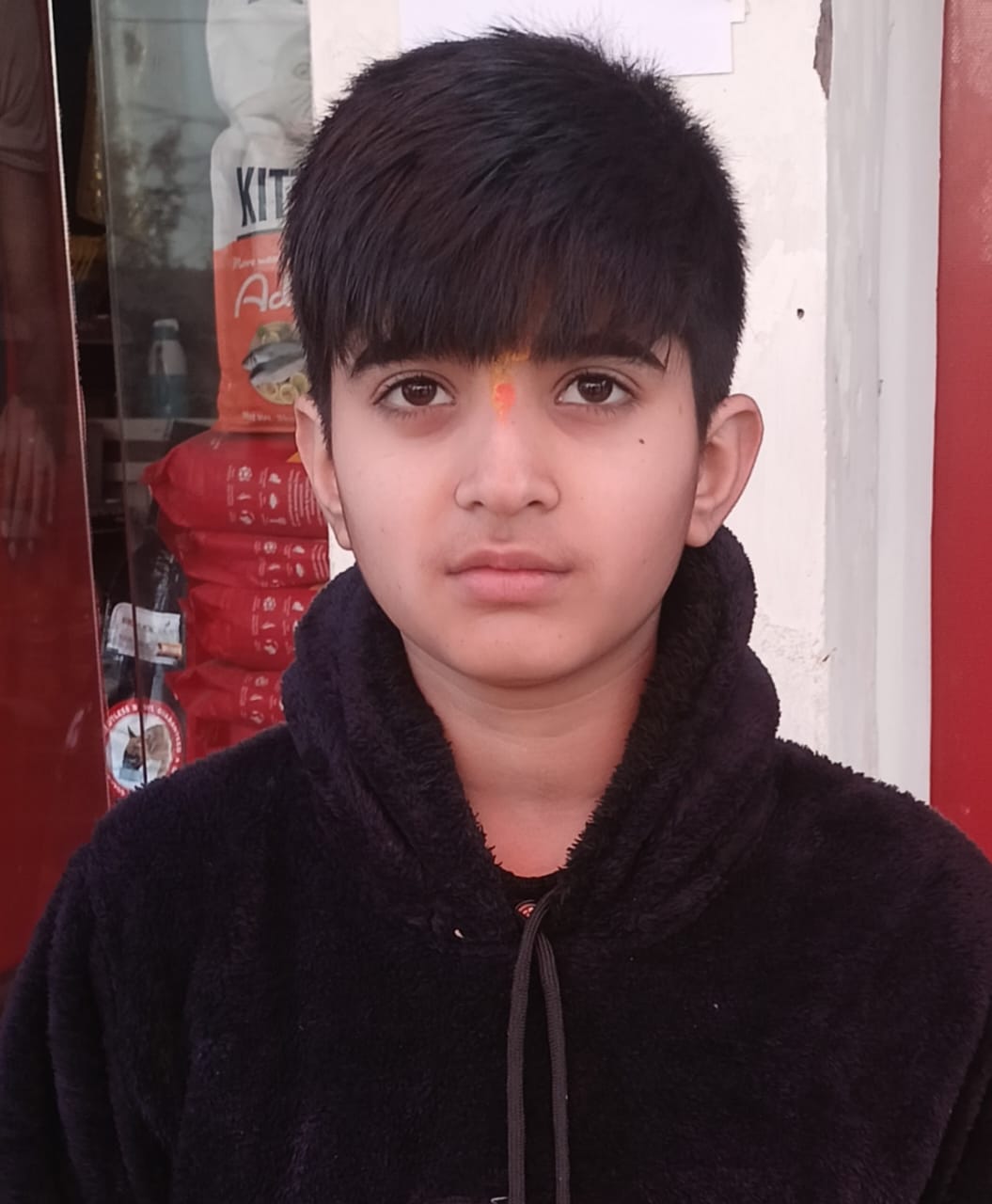
Recounting what happened the day Vihaan’s life was tragically cut short, Kumar told us, “There was heavy shelling throughout the night, and nearly 70–80% of the population had started relocating to safe zones. We also decided to leave for safer areas such as Rajouri and Jammu. We were travelling in our private car and had covered three to four kilometres when a shell fell near us, causing a huge explosion. Our car was moving at a speed of 60–70 kilometres per hour when the splinters from the shell hit Vihaan on the head, and he died on the spot”. Apart from Vihaan and his parents, Sanjeev Kumar’s sister and her family were also in the car. “My brother-in-law is admitted to a hospital in Amritsar, his condition is also quite critical”, he added.
In our analysis of over eight major news channels across English and Hindi, we found that between May 7 and 10, most aired visuals of drones, shells, and artillery. But there was little or no emphasis on what happens when these shells hit the ground and damage homes, shattering the lives of those who did not see it coming. NDTV was an exception and Shiv Aroor’s ground reports from civilian areas across sectors in Kashmir and Punjab were among the few that went beyond defence gains.
Besides the misinformation clarified by the families above, news channels also went all out, launching fictional strikes on the Karachi port and Islamabad and sharing unrelated visuals from Gaza and even from video games as footage from the conflict.
READ: The fictional strikes on the Karachi port and what it says about Indian media
We also wrote about how the government’s own fact-checking unit, PIB, refrained from calling out the falsehoods spread by news channels.
READ: Op Sindoor: As Indian media made false, outrageous claims, PIB looked the other way
Misplaced Focus
Much of the coverage on the ground situation remained focused on the operation and India’s defence wins, conveniently downplaying the human cost.
For instance, ABP News’ broadcast from May 7 has anchor Megha Prasad claiming, “… Pakistan had to respond in some way. Chitra, you must understand, on our side of the border, there are many homes where people were advised to evacuate. But some families chose to stay, perhaps due to personal reasons. So when there is shelling on the border, these kinds of tragedies and casualties do happen [sic].”
Prasad’s comment here is not just inconsiderate but a blatant misrepresentation of what happened. Two journalists from Kashmir and families of five victims explicitly told Alt News that many of the casualties happened in towns with high civilian populations and that it appeared as though the government or the administration was unprepared for the scale of attacks by Pakistan.
“We did not expect shelling to take place in the town, neither were we alerted that something like this could happen….We have not seen shelling of this scale… drones reached all the way to Jammu city, imagine if you witnessed drones and shelling in Delhi-NCR, that will be unexpected, right? That’s how it was for us… This was not meant to be a war; it was an operation…” said Jamrodh Singh. “Nobody from the administration arrived to help us. There were no evacuation orders, no sirens, no warnings.”
“I am 45, in my whole life here [in Jammu and Kashmir], we have not witnessed civilians being attacked. Both sides would attack military posts, and that was it, for the first time we saw war so closely. They [Pakistan] fired without any hesitation. So much of the Poonch town has been damaged, it’s never happened before,” Tariq Manzoor explained. He added that even if the administration had announced that morning or in the middle of the night and asked people to take shelter, many could have been saved.
Vihaan’s father Sanjeev Kumar, a resident of Poonch for decades now, also reiterated that he had never seen anything of this scale before. “Before this, whenever such a [conflict or war-like] situation happened, the exchange of fire was only between the [defence] forces on both sides. I am almost 46 years old and I have never seen anything like this. In 1992 [referring to the Siachen conflict], when I was younger, I remember about three or four shells fell near our area, but nothing of this scale”.
Like the families of Zain, Urwa and Vihaan, others too tried to leave town on their own. Jamrodh Singh said that when the rest of his family tried to reach Poonch after his uncle’s passing, they saw most people desperately trying to leave. “So many were labourers who did not have their vehicles, they were willing to pay anything to just save their lives.”
An India Today report from Poonch by Kamaljit Sandhu corroborates this. One family told her that they sold their motorcycle for Rs 3,500 and cut down on food expenses to afford evacuation, yet it wasn’t enough for all members to secure a spot on the bus. They ended up stranded on the roadside, helpless. The channel also reported on a similar situation in Punjab’s Ferozepur, where people residing in the Kaluwala village were shoring up their means to find a way out.
However, apart from this, much of India Today’s coverage remained focused on India’s military capabilities. Even when civilian deaths were reported, which, anyway, received very little screentime, the conversation remained centred on Pakistan instead of urging accountability on why Indian authorities did not make rescue efforts when the situation worsened, and whether these losses could have been prevented.
The families we mentioned above all told Alt News that coverage by mainstream media outlets, often selective, seemed to disregard their grief, painting an altogether different picture of the ground reality.
“Even the A of administration was nowhere to be seen. Nobody was guiding anyone to safety. Each was left to their own.” He later told Alt News that officials from the administration only arrived after the ceasefire. “Nobody came when the shelling was happening to help us out. Why they were not there, we don’t know. We heard about the plane crash in Ahmedabad. You must have seen that immediately after the crash, emergency responders reached the location. However, that was not the case for people in Poonch when shelling took place.”
But the focus of news channels remained elsewhere.
Take the programme aired by Times Now Navbharat on May 7, where anchor Sushant Sinha and former army personnel Gaurav Arya were discussing Operation Sindoor and Pakistan’s next steps. During the episode, Arya said he prays that Pakistan attacks India so the country can give a befitting response. “Meri prarthana hai ki ek baar Munir [Pakistan’s army chief] attack kar de, bas mazza aa jayega”. Once they [Pakistan] attack something strategic, India will have a reason, a justification to hit back or “thoko”. While Arya’s statement was in poor taste, the channel egged him on. At one point in the show, the two even lauded India’s deception tactics. Instead of actually sounding the siren for war, they straight up did the job, Sinha said with pride. “Siren nahi baja, band baja. Bajna kahiin aur tha, baj kahiin aur gaya,” he said with a grin.
Not only are such comments on national television in poor taste, but they also show just how divorced the media is from reality. For families that lost their loved ones that morning in Poonch, any siren sounded by the government could have been a lifeline.
“There was no indication from the administration’s end that would help us understand the extent of the situation. No sirens, no security officials, no local police. Nobody alerted us or told us to stay indoors while shelling was happening or that we would be moved to safe zones. What happened due to this is that people started to evacuate since 3 am,” Vihaan’s father told Alt News.
“They told us it would be a mock drill and then declared war. Common people were under the impression that there would be a drill, and for no fault of theirs, innocent children died,” said Maria Khan, the aunt of the twins who passed away. “It’s easy to sit in other states and wish for a war, come to the border areas, stay here and see for yourself what war is like in reality.”
Families of Qari Mohammed Iqbal and Amrik Singh also blamed the administration.
“I understand the limitations that sensitive operations pose. Some things cannot be said out loud, some information cannot be divulged to all, but since there was going to be a drill, you could have called it a mock drill and gotten people to move out… Why would you let your own people die?” said an anguished Jamrodh Singh.
“If they told the public even an hour or two ahead that save yourself, find shelter, find your safe points to hide, because we are going to strike and they may hit back, the damage could have been limited. The children and older men who died could have been saved… People lay waiting for the mock drill and overnight everything changed, we were suddenly in a war zone,” Tariq Manzoor said.
Jamrodh Singh also blamed the media for the excessive but misplaced coverage on the mock drill in some parts. “In Bihar, they called photographers to shoot how they made children do the mock drills. [On news] they showed children being evacuated, sirens were played, they all hid in bunkers, they publicised this, they showed it on TV. But on the ground, in the area where this was absolutely crucial, none of this was done and nobody is questioning it,” said Jamrodh Singh.
Majority of Times Now Navbharat’s segments around that time used similar language and remained focused on damage India caused Pakistan. Likewise, throughout their panels and debates on Operation Sindoor, Republic called politicians, defence experts and former military personnel who all lauded the military win, using hypermasculine language. A lot of screen time was used to shame Pakistan with a passing mention of civilian casualties in bulletins.
Overall, it would be fair to say that several news channels owned by legacy media houses skipped questions on accountability by the Indian side. However, as we said before, NDTV was among the select few who raised these issues in their shows. It’s a different matter that these reports were often eclipsed by discussions on India’s defence moves. Reportage by the channel’s Hindi counterpart, however, was very different with tickers bordering on jingoism.
Rhetoric of Revenge
In its segments, Republic also kept reiterating how Operation Sindoor was “revenge” for Pahalgam. Even before the Indian strikes, the channel had begun using the hashtag revenge is coming. But such coverage overshadows the resentment of survivors who felt their losses were dubbed as collateral damage.
But Republic alone cannot be blamed for setting such a narrative when the Prime Minister’s 22-minute address to the nation also skimmed over the casualties from Operation Sindoor.
“The terrorists wiped off the sindoor of our sisters, that is why India wiped off the headquarters of terror…” Modi said in his address on May 13. While he did say Pakistan attacked civilian homes, there was no mention of how many lives were lost in the border areas of Jammu and Kashmir and Punjab.
“We are deeply sorry about the innocent lives lost in Pahalgam. This is why they launched Operation Sindoor, right? If this operation was to avenge them, what about the Indians who died in Pakistani shelling? What operation will be launched for the innocent children who died?” quipped Maria Khan, her voice breaking. She added that in her interviews with news channels, she clearly asked these questions, but her bytes were edited and conveniently not aired.
“People from Kashmir, Poonch, and almost everyone are highlighting that the PM did not even mention the area, district or even J&K in his speech, think about how we felt, our kids died. Three innocent kids died, and there was no mention of that,” she continued.
“We already lost 26 lives, and in order to avenge that, we suffered more losses. It could have been avoided,” said Manzoor.
On X, too, there has been anger about the disregard for the lives of those living near the borders. On May 13, Nasir Khuehami (@NasirKhuehami), national convenor of the J&K students association, wrote on the social media platform: “It is deeply disheartening that in the Hon’ble Prime Minister’s 22-minute address, there was not a single word about the innocent lives lost in Poonch, Rajouri, and Uri… Over 15 coffins were lowered into the ground, including that of a 12-year-old child, yet there was no word of condolence, no acknowledgement, no empathy. Are the lives on the border invisible? Do the cries from Poonch, Rajouri, and Uri not reach the corridors of power?”
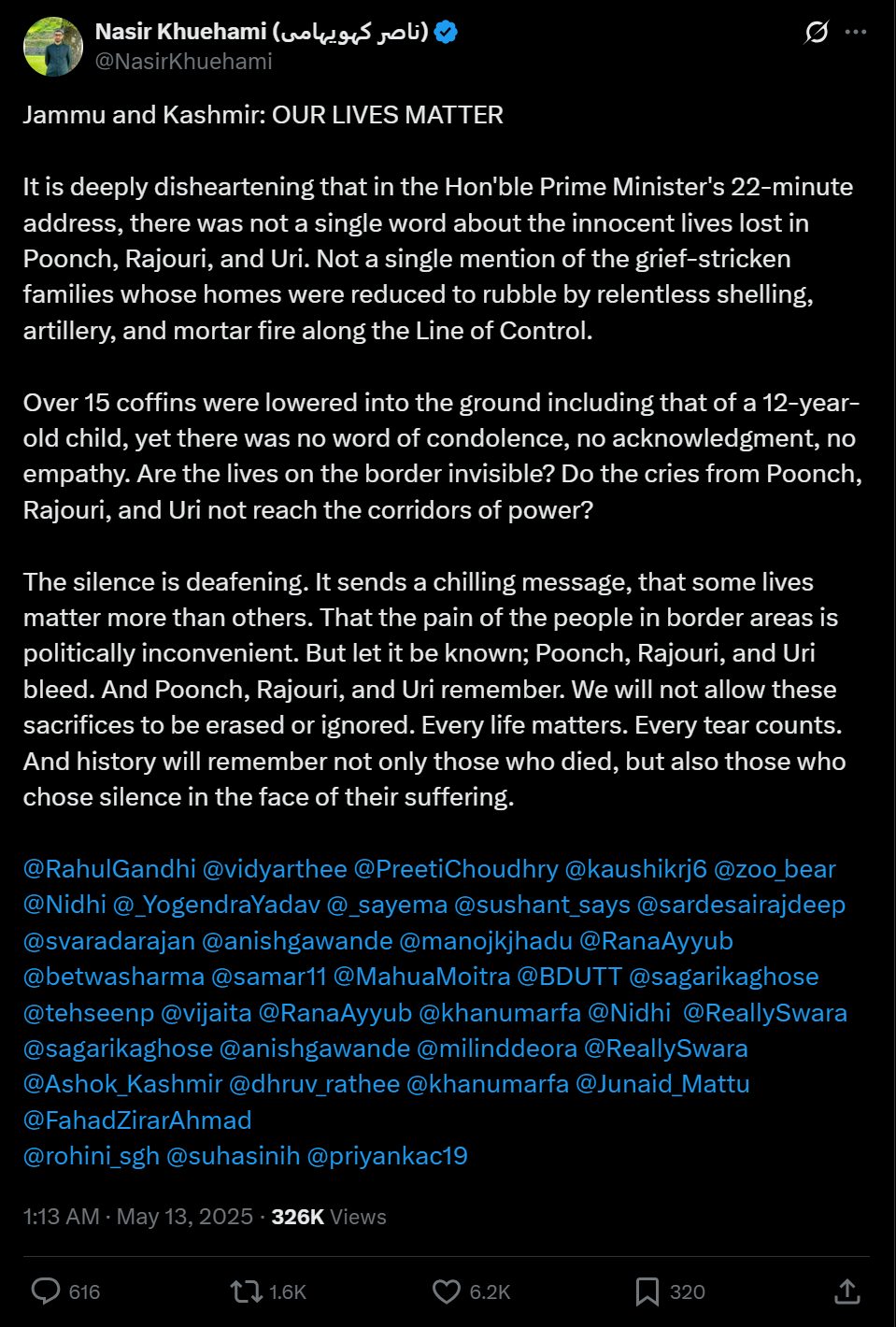
With grief welling in their hearts, the victims’ families are trying to live on.
“My appeal to the government is that they create a war memorial in Poonch for those who died due to this conflict, and they should be declared as martyrs,” said Sanjeev Kumar, who is still trying to come to terms with his son’s demise. “Family members who have lost a loved one have received appointment letters [for a government job], and a relief amount has also been announced. I still haven’t had the mental bandwidth to check these things; my only child is gone,” said the grieving father.
“A few minutes before he died, my uncle recited a Punjabi line from our holy book, Guru Granth Sahib, telling my aunt that when death comes to find you, it will. That’s what happened,” Jamrodh Singh said, adding they wished it didn’t have to be this way.
The bereaved families said they have been offered financial compensation and jobs but also that official visits followed much after the incident.
Punjab victim Sukhwinder Kaur’s relative, Ramandeep Singh, told us that the family was given Rs 15 lakh as compensation, adding that several politicians paid them a visit. “The main thing is, when the blast happened at their house, nobody came. When they were being rushed to the hospital, even then, no one came. The military force visited the home only to pick up the drone debris that had fallen on their house”.
“The administration is now offering us Rs 30 lakh and a fourth-class [government] job, but can a kid’s death be compensated with money? When we were trying to arrange an ambulance and an oxygen cylinder to move Zain and Urwa’s father from Poonch to a different location, we couldn’t get hold of anything. This incident happened at 6:30 am, and we could get an ambulance only by 4:30 pm,” said Maria Khan.
“The governor announced a compensation of Rs 15 lakh and a job for those who lost their family in the conflict. This money has reached those affected. But those whose houses were majorly damaged were offered a sum of Rs 1.3 lakh; those with partially damaged homes were offered just Rs 4,000. Reconstructing some of these houses will cost several times more. In one of the houses, just fixing the damage alone will cost Rs 30 lakh; where will they get this money from? What is Rs 1.3 lakh or Rs 4,000 in comparison? Even insurance companies are washing their hands off the damage to cars because of shelling,” said Tariq Manzoor.
“Our local media [in J&K] and small news outlets have really been our strength; many came despite the circumstances and did really good coverage of what happened. This was a major miss by big TV channels… they were on a different tangent,” he added.
Editor’s Note: Images of victims, including minors, were provided by their families, who have given Alt News exclusive permission to use them for this story.
Independent journalism that speaks truth to power and is free of corporate and political control is possible only when people start contributing towards the same. Please consider donating towards this endeavour to fight fake news and misinformation.
Donate Now
Related
www.altnews.in (Article Sourced Website)
#Operation #Sindoor #Grief #ground #glory #screens #Alt #News
